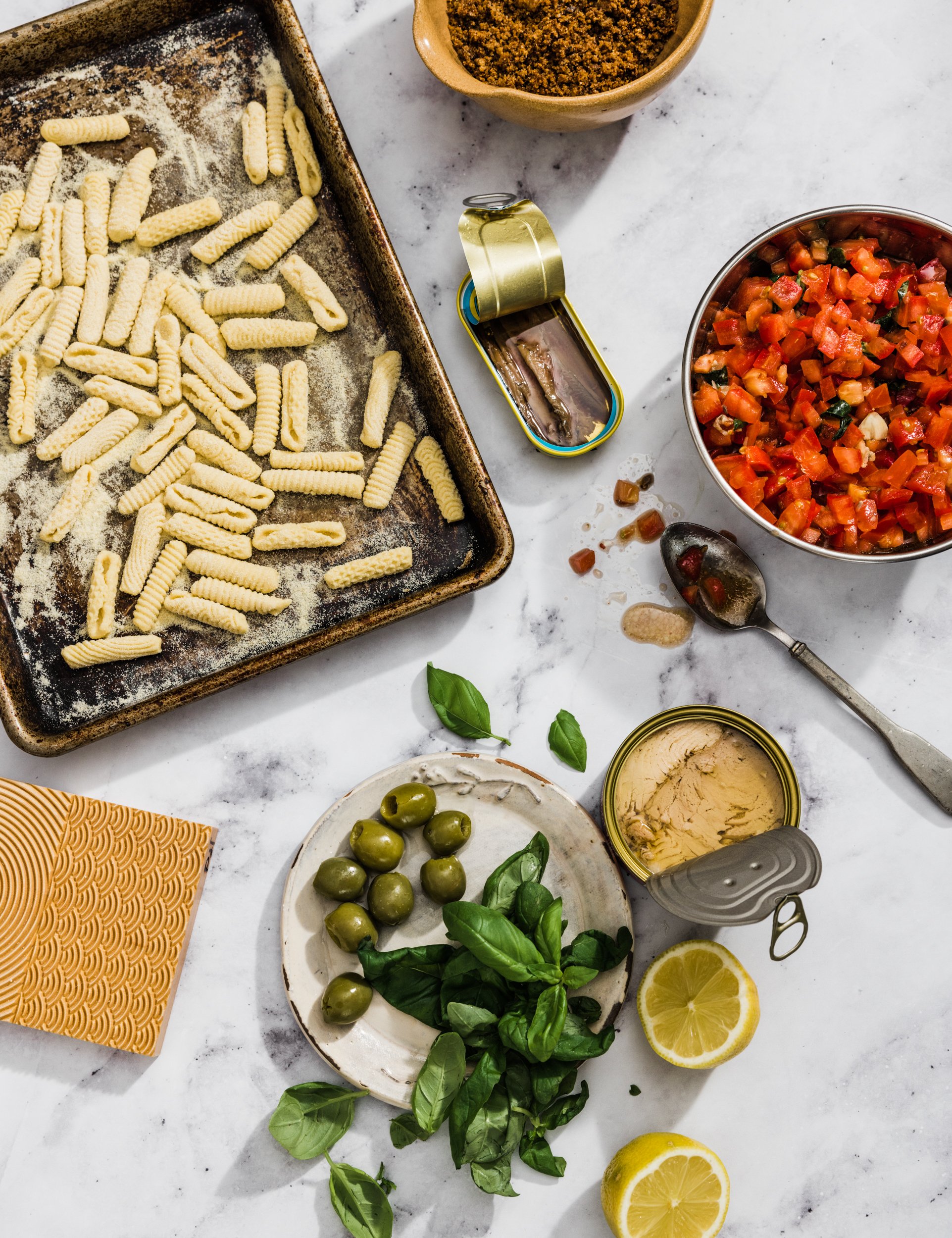A Sicilian Summer
Photos by Michael Piazza / Styled by Catrine Kelty
If you caught Season 2 of HBO’s television series The White Lotus, you’ve likely fallen in love with Sicily. Set in the dramatic landscape of Taormina on the eastern coast, the show is like a tourism promo for the island’s stunning cliffs, lush foliage, sun-drenched beaches and luxury resorts. But Sicily—a place that can be simultaneously charming and scruffy—has so much more to offer.
In one afternoon, you can stroll through a warm citrus grove, or lower yourself into a cool volcanic cave. Soak up the serenity of a seaside villa, or feel the agitation of congested city streets. Breathe in the briny sea air, or exhale under the perfumed veil of blossoming chestnut trees. Sicily is a land of stark contrasts, and these juxtapositions are also evident in the food. Sweet and savory often live happily side by side, as in the classic eggplant antipasto called caponata. “Agrodolce” (Italian for sweet and sour) is a cornerstone of Sicilian cooking and gives certain dishes, like the grilled fish featured here, an explosion of flavor that makes you want to take another bite. But how did this most populous island in the Mediterranean acquire a taste for such variety in one forkful?
It’s fitting that Sicily is considered to be the “ball” to Italy’s mainland “boot” since the territory has been kicked around quite a bit over the centuries. Conquered by many invaders, the region has a layered history, with each ruling empire leaving its impression on the culture and cuisine. Ancient Greeks introduced the art of cheesemaking, Romans exploited the land for grain, Arabs introduced crops such as rice and sugar and the Spanish brought the now ubiquitous tomato from the New World. These varied influences, combined with the island’s native ingredients and natural resources, have resulted in a wildly diverse palette of flavors. The common element that holds them all together? The sun. Sicily’s heat gives richness to grapes, olives, tomatoes, citrus, almonds, wild herbs and a bountiful array of fruits and vegetables. It also cues cooks not to labor too much in the kitchen, especially in the hot summer months.
In New England, we may not have volcanic mountains or citrus groves, but we do get our fair share of sun and heat. Let’s face it—summers just keep getting hotter. The following recipes keep that in mind and involve little to no time standing over a hot stove.
Instead of simmering sauce for handmade cavatelli, here hot pasta is tossed with a juicy, Sicily-inspired mixture of fresh tomatoes, olives, canned tuna, anchovies, garlic and basil. For caponata, you will have to shake a skillet over a flame for a bit, but it’s meant to be eaten cold or at room temperature; both you and the dish will benefit from a little cool-down time before heading to the table. Granita—a sweet Sicilian slush that’s made in a variety of flavors like lemon, almond and coffee—is ideal for a hot day when you relish the opportunity to stick your head in the freezer every 45 minutes. Historians trace the origins of granita to the Middle Ages when snow was gathered from Mount Etna, stored for the warmer months, and flavored with fruit juices and syrups. Here, locally grown watermelon is quickly whizzed up in a blender, frozen and stirred at intervals until icy.
A visit to a New England farmers market in the height of summer will yield much of the same produce found on the Sicilian table—plump tomatoes and eggplants, lush bouquets of fragrant basil, ripe melons and summer fruit. Something that’s trickier to find here are fresh sardines, a mainstay of Sicily’s cuisine. The little schooling fish (which are actually small herring) were once abundant practically everywhere, including the Mediterranean and the North Atlantic. Now, local availability is sporadic, or imported from Portugal. When you can’t find them, whole local mackerel are a perfect substitute; they’re very inexpensive and are usually available in summer. They have a similar rich flavor to sardines and will contrast beautifully with the lemony fennel agrodolce.
If traveling to Sicily is not on your summer agenda, use these recipes to create your own White Lotus fantasy that’s perhaps a little more shabby, but no less chic.





